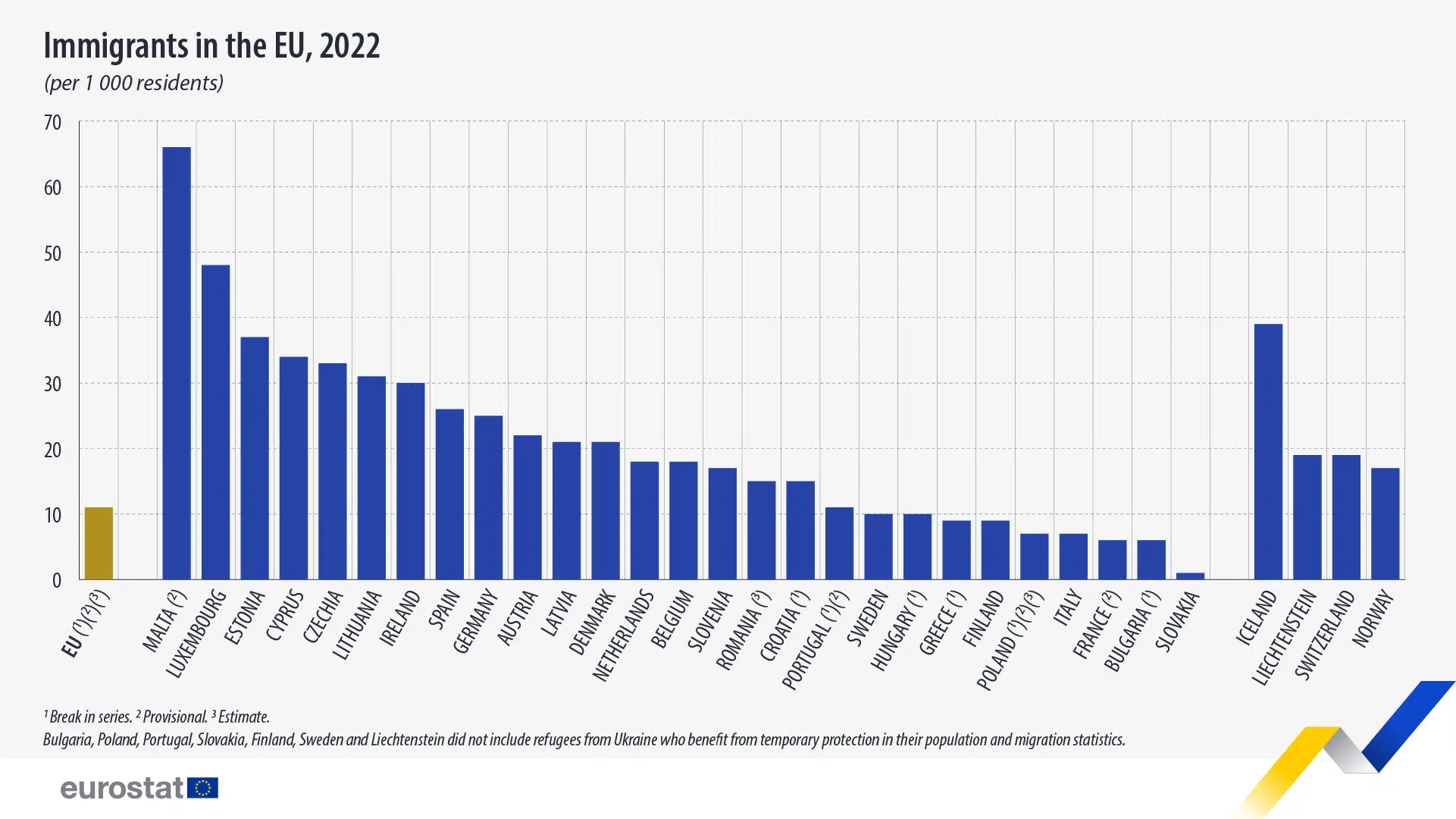Brussels – One year later, the number of people who, for whatever reason, decided to immigrate to EU countries has more than doubled: in 2022, 5.1 million people entered the EU from the rest of the world compared with 2.4 million persons in 2021, according to data released by Eurostat.
The balance between those arriving and those leaving is solidly positive: in 2022, 1 million EU residents left their country for other continents, steady compared with 2021. The Statistics Office of the European Union reports that of the 448.8 million people living in member countries as of January 1, 2023, 27.3 million were non-EU citizens, or 6.1 percent.

In 2022, seven immigrants entered Italy for every thousand inhabitants: 411 thousand people out of a population of 58.997 million. Of these, 74.5 thousand already held Italian citizenship, and 49.4 thousand chose to move to Italy from another Member State. A total of 287 thousand immigrants arrived in Italy from the rest of the world in 2022.
Relative to the national population size, Italy remained below the European average for immigrants, which stands at 11 immigrants per 1,000 EU residents. Malta recorded the highest immigration rate in 2022 – 66 immigrants per 1,000 residents – followed by Luxembourg with 48 and Estonia with 37. In contrast, Slovakia recorded the lowest immigration rate, with 1 immigrant per 1,000 residents, followed by Bulgaria ,and France, each with 6 immigrants per 1,000 residents.
Looking at the figures in absolute terms, Europe’s El Dorado is Germany: 2.1 million people immigrated to the Federal Republic in 2022 alone. In second place is Spain, with 1.3 million, followed by France and Italy, with just over 400,000 immigrants. Germany, however, also saw the largest number of departures (533,500), followed by Spain (531,900), France (249,400), Poland (228,000), and Romania (202,300). In 2022, all 27 Member States generally recorded more immigration than emigration.
English version by the Translation Service of Withub




